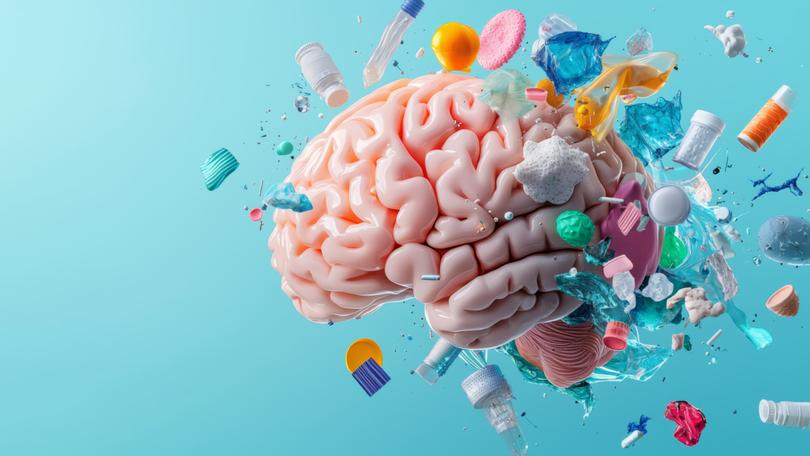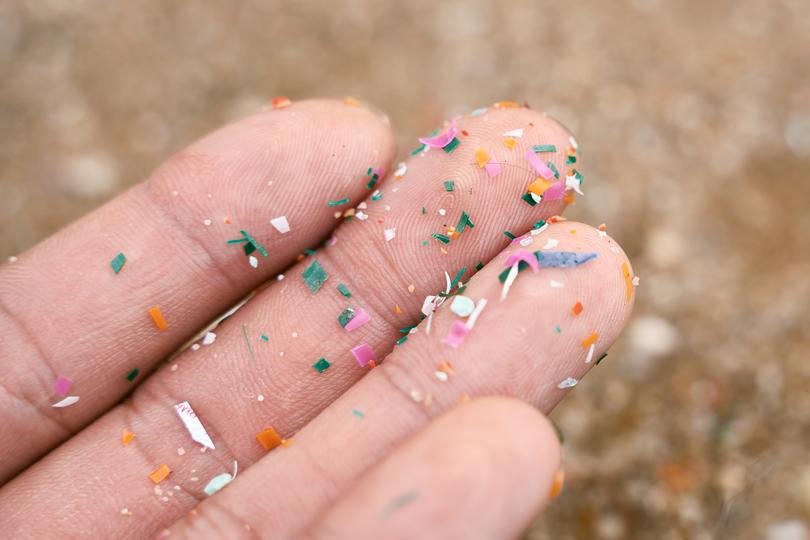THE WASHINGTON POST: Our brains are filling with more and more microplastics, study shows

A new study shows that microplastics are making their way into human brains — with potentially dangerous effects on people’s health and mental acuity.
A paper published Monday in Nature Medicine found that the tiny fragments of plastic are passing the blood-brain barrier and into human brains, and the amount of microplastics in the brain appears to be increasing over time. The concentration of microplastics in analysed brains rose by about 50 percent from 2016 to 2024.
The scientists also examined the brains of 12 deceased patients diagnosed with dementia, and found that they had three to five times as much microplastics as normal brains.
Sign up to The Nightly's newsletters.
Get the first look at the digital newspaper, curated daily stories and breaking headlines delivered to your inbox.
By continuing you agree to our Terms and Privacy Policy.“Every time we scratch the surface, it uncovers a whole host of, ‘Oh, is this worse than we thought?’” one of the paper’s lead authors, University of New Mexico toxicology professor Matthew Campen, said in an interview about an earlier version of the paper.
Microplastics are tiny pieces of plastic — less than five millimetres in size, or smaller than a pencil eraser — that are either manufactured or slough off plastic objects. Nanoplastics are even smaller and can be a fraction of the width of a human hair. Most of the microplastics found in brains in the study were on the nano scale.
In recent years, scientists have realised that many plastic items (plastic bags, water bottles, tires, polyester or synthetic clothing) can shed small fragments or fibres that make their way into air, food and water. Many of those particles are burrowing deep into the human body. Microplastics have been identified in the liver, placenta, blood, testicles and even certain arteries that lead to the heart.
For the new study, scientists analysed 52 brain specimens, 28 that were autopsied in 2016 and 24 that were autopsied in 2024. They found microplastics in every sample, but there were significantly higher concentrations of microplastics in those from 2024.
Researchers then obtained additional brain samples going back to 1997 and found that they followed the same trend: more recent samples had much higher numbers of microplastics. They found no correlation with how old the person was when they died.
Campen says that, with just a single study, there is reason to be cautious when interpreting the results. But, he added, the amount of plastics produced globally doubles every 10 to 15 years, which suggests that humans’ level of exposure has skyrocketed. “To see it go up 50 percent in eight years in human organs … I think that’s perfectly in line with what we’re seeing in the environment.”
The researchers estimated that the average brain studied had about seven grams of microplastics in it, or a little more than the weight of a plastic spoon. But they cautioned that could be an overestimate, as some other particles in the brain can resemble microplastics.
Jaime Ross, a professor of neuroscience at the University of Rhode Island who has studied microplastics’ effect on mouse brains, praised the new research and said the increased “plastic burden” of microplastics in the body was concerning because it could exacerbate inflammation.
Phoebe Stapleton, a professor of pharmacology and toxicology at Rutgers University who was not involved in the study, said in an email that scientists have long wondered whether microplastics could pass the blood-brain barrier — the thick membrane that protects the brain from toxins and viruses.
While it’s not the first time researchers have found microplastics in the brain, the new study shows that the pieces of plastic are reaching deeper into the frontal cortex. Last year, a group of researchers found microplastics in the olfactory bulb, or the part of the brain that processes smells. The particles were present in eight of the 15 brains studied.
“This paper provides clear evidence that micro- and nanoplastics are indeed in the human brain,” Stapleton said. The paper also showed that the brain appears to be more susceptible to microplastics than other organs — brain samples had seven to 30 times as much microplastics in them as liver and kidney samples.

The scientists also used an electron microscope to identify the plastic in the tissue itself. They found small shards or flakes, in a shape that Stapleton described as “unexpected.” Most studies of microplastics’ effect on cells and organs examine spherical-shaped particles — different shapes could mean different health effects.
Other scientists have used mice to study how microplastics in the brain could affect health, and found troubling signs. In one study from Ross and other University of Rhode Island researchers, mice were given water laced with tiny polystyrene particles, the same type of plastic that is used in plastic foam and yogurt containers. After just three weeks of exposure, the mice demonstrated cognitive changes - including changes in the brain consistent with early markers of Alzheimer’s. (Humans are getting microplastics through water as well - the tiny particles have been found in bottled water and in tap water.)
Researchers caution that it’s still far too early to connect microplastics to specific cognitive problems, given the ways in which dementia alters the body. Patients with dementia have weaker blood-brain barriers, they warn, and have a harder time clearing toxins from the brain. In human brains, therefore, the high numbers of microplastics could be an effect of dementia or Alzheimer’s, rather than the cause.
Richard Thompson, a professor of marine biology at the University of Plymouth and the first scientist to use the word “microplastics,” said that linking the particles to health effects is “far more challenging” than identifying them in the first place. But Thompson, who was not involved in the current research, added that studies like this start to paint a picture of associations between microplastics and health risks.
Kimberly Wise White, vice president of regulatory and scientific affairs at the American Chemistry Council, a plastics industry group, said in an email that plastic makers are working to help reduce the creation of microplastics. “The global plastics industry supports advancing scientific understanding of microplastics,” she added.
Still, researchers warn that they are still just scratching the surface of what possible health risks microplastics could pose. Last year, a study found that patients with microplastics in a key artery were more likely to experience stroke, heart attack or death. But more research is needed to identify the risks — and part of the issue is the sheer ubiquity of these particles.
“There are no control groups,” Campen said. “Everyone is exposed.”
© 2025 , The Washington Post
